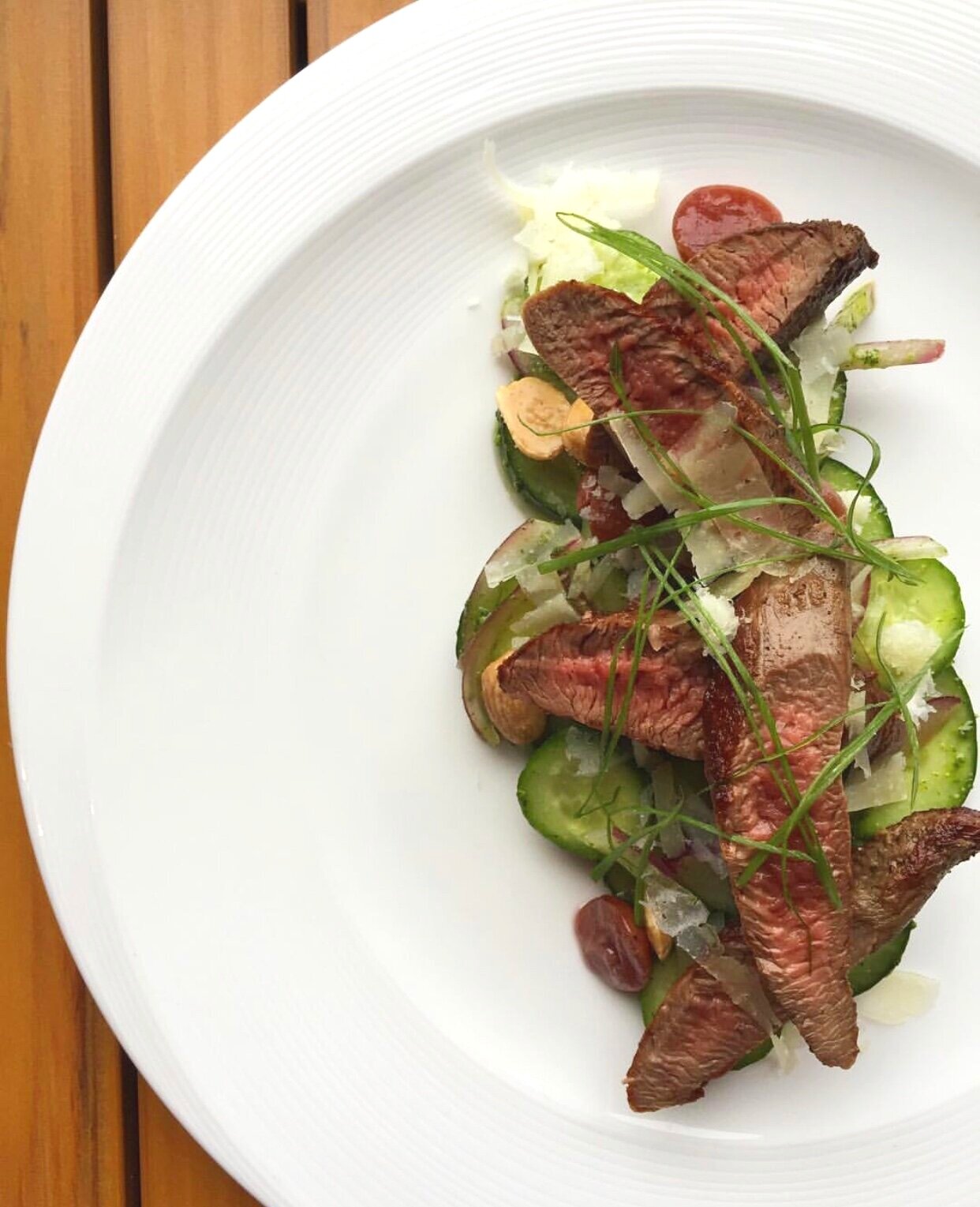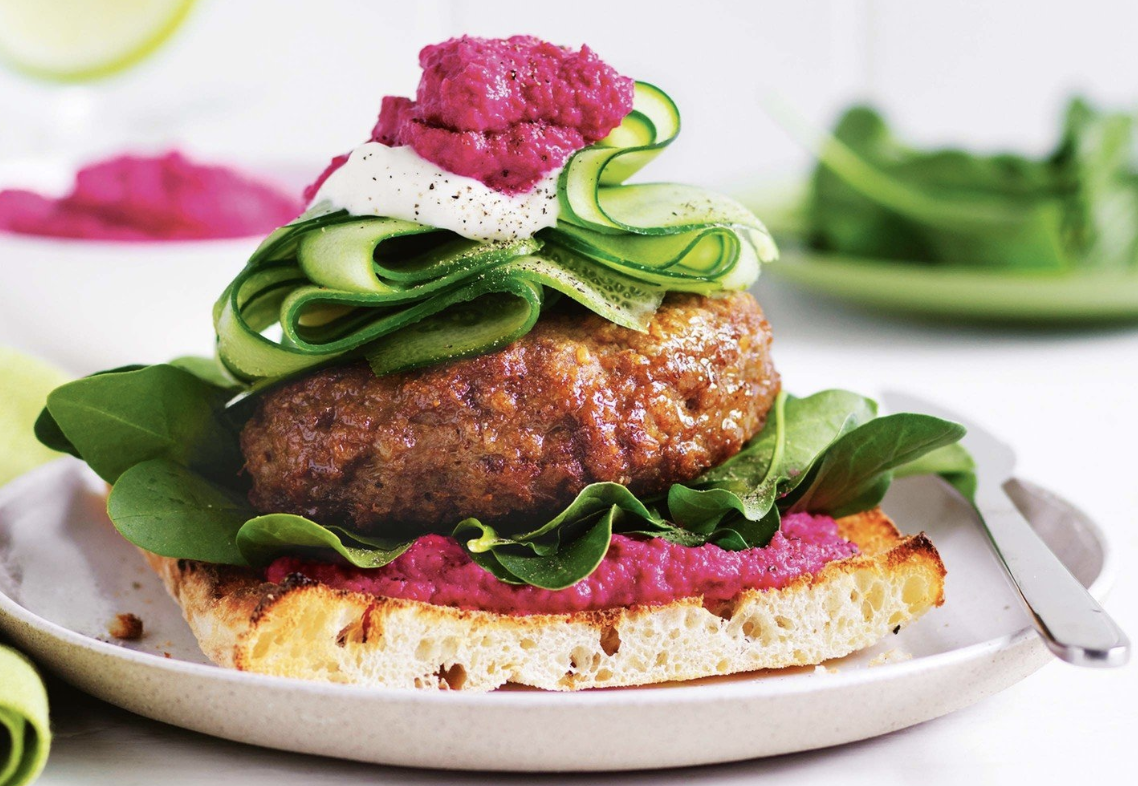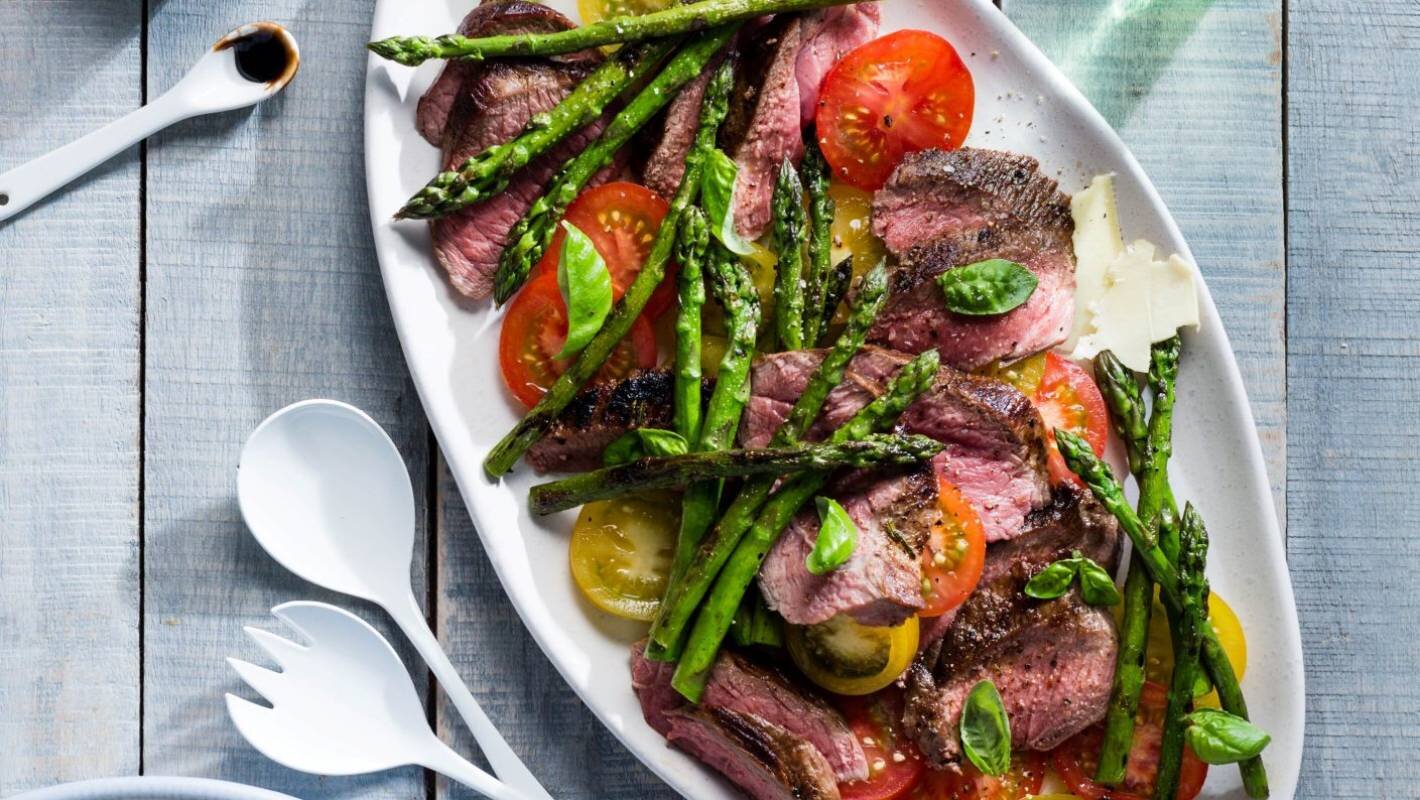Which lamb is the best: American, Australian, or New Zealand? -with guest Chef Dan Kern of 1201 Kitchen
Cover Photo Chef Dan Kern/Table Magazine/ Photographer Adam Milliron
The great debate~ Each country has their own claims to fame, but who can claim the trophy for producing the worlds best lamb? We aim to reveal…
globalmeatnews
What constitutes “the best” of course lies in the “taste” of the beholder, yet undeniably there are factors that contribute to the success of lamb’s sale from a particular country. While regionally, each area has its own particular distinguishing tasting notes and characteristics (based on a multitude of factors such as external climate, breed, diet, and various exposures, etc), we can delve deeper to take a more educated approach.
We could turn to scientific studies to answer this question, seeing as it has already been determined that the fat, or particularly the branched chained fatty acids (BCFA’s), produced by bacteria in the lamb’s rumen (or the first stomach chamber that serves as the site for microbial fermentation) provides its distinctive “gamey” flavor. These BCFA’s were found at much higher concentrations within lamb meat than any other meat. Lamb that is raised on a diet of grass have a more intense pastoral flavor than those raised on a diet of grain. Lamb from Australia and New Zealand is pasture fed on mixed grasses and American raised lamb is first fed a diet of grass but finishes on grain. As a result of switching the lambs diet, they have lower concentration of BCFA’s. Learn about the experiment Cooks Illustrated conducted that shows just how much the fatty acids in lamb contribute to its unique flavor.
So back to the question at hand, which lamb is best? Well, who is to say that a higher level of BCFA’s constitutes the “best”? Sure when we compare cuts of beef, the more fat marbling is generally regarded as having the best flavor, but what if the general population from an area doesn’t like a fattier cut? I personally know meat-eaters that do not always opt for a ribeye over a strip steak. It has to do with the price point and with personal preferences which are often swayed by our familiarity with particular types of cuisines, cuts and preparations of meat, even the media and marketing.
“While the world's per capita consumption has increased (from 3.95 pounds per year in 1965 to 4.17 pounds in 2007, according to the USDA), in the United States it has only gone down. Way down. Today, Americans eat just 0.88 pounds of lamb per year, compared with close to 82 pounds of chicken. By contrast, annual consumption per capita of lamb in Australia is 26 pounds” (Cooksillustrated, Birnbaum, 2019).
Total lamb exports from New Zealand in 2017-2018 are listed at over $3.1 billion according to Global Meat News. This however does not reflect what is happening within the country, as many New Zealanders have been more recently opting to ditch lamb in favor of cheaper meats. Beef + Lamb senior agricultural analyst Ben Hancock provides several reasons for the decline, one namely being high and steadily increasing prices of lamb compared to other meats. He adds,
"Lamb is a premium meat now – it's competing against your cheaper proteins like poultry and pork. Land in New Zealand is increasingly being used for dairy instead of lambs and the resulting shortage of lambs had created a price hike…Chinese buyers had also pushed up the price of the remaining sheep meat stocks, making it unaffordable for many Kiwis.”
So while flavor undeniably plays a major role in deeming which country produces “the best” lamb, we must also stress here that how lamb is regarded in society, in its supply, demand, and price points, has a massive impact on the consumer’s formed opinions.
Cameron Burnell/Stuff
The Breakdown
American Lamb:
Raised in the USA, most quality lamb comes from Colorado and the Midwestern States. Their diet in being partially grain-fed plays a large part in their flavor, which is why most will say that American lamb tastes much less “gamey” and rather sweeter than its counterparts (which are mainly grass-fed). This breed is the largest in size and many say is the highest in consistency of quality thus its high price point even within the States. Odd to think that imported lamb from the other side of the world is the most commonly sold and most widely available lamb being sold on U.S. market shelves, but it’s true.
The American lamb is said to be variable in its widespread availability while lamb farming is still considered a small industry in the U.S., hence fluctuations in supply and demand. The lamb market currently looks to be taking an upturn and with help from well-marketed food events such as the Western Pennsylvania Lamb Cook-Off and Taste of Vail's Colorado Lamb Cook-off. The latter features Vail Valley’s finest chefs and the American Lamb Board, which works to build demand for American Lamb. The Western Pennsylvania Lamb Cook-Off & Festival in Pittsburgh's Strip District drew large crowds this year in its third annual event. With a line-up of 34 All-Star Chefs competing for the title and featuring lamb products from PureBred Elysian Fields Farm, created by farmer Keith Martin and Chef Thomas Keller implementing the “Safe Alternative ® method”—a highly strategic quality control system to track all lambs raised. We asked Chef Dan Kern of 1201 Kitchen, 3-time champ from Team “Most Hated Players” to give us the low-down on the event and his take on the lovely lamb. Jump to the end of the article by clicking here to skip to his interview.
Australian Lamb:
“Aussie” lamb remains, arguably, the most popular item today and is commonly found on U.S. market shelves. Some Australian sheep have even now been cross-bred with the American lamb to create a medium size, more consistent product. It was not long ago that Aussie lamb was raised primarily for their wool and the meat was almost a by-product of that time. In terms of consistency then, their product had varied quite widely in size and quality. Today Aussie lamb has specific size and weight requirements raising their product to a higher standard, however is still less expensive than American domestic lamb. It is believed that drought now plays a large role in Australian farming and in their sheep numbers and price points.
New Zealand Lamb:
There is an estimated 10 sheep to every Kiwi, which means that if there are 4,797,385 New Zealanders, then there is approximately 47,973,850 sheep! New Zealand may be known for their sheep farming, but the country in its earliest state had virtually no mammals. The first sheep were set ashore by Captain Cook in the Spring of 1773. New Zealand since has had a long history of producing lamb, mainly for its wool industry, but the demand for lamb’s meat (sheep in its first year of life) is of more recent times. Not long ago, it was hogget, or juvenile sheep older than one year, that was their main staple. In the practical sense, if you had several children, then slaughtering a lamb for its meat would simply not provide a large yield to feed the family. The meat of an adult sheep, called mutton, was once in high demand in Britain but trends change and current demands for mutton are highest now in China. The NZ breed of lamb is smaller in size than the Australian and American varieties and is raised entirely on pastured lands with a mixed-grass fed diet and indigenous fresh water sources. Locals claim that it is the mineral content of their waters that gives their lamb it’s distinct taste. New Zealand’s average rainfall clocks in at 23-62 inches annually. One might say that their climate and untouched land is the most ideal for raising any ruminant.
So which is the best? Well let’s ask Chef Dan Kern, third time winner of Western PA’s Lamb Cook-Off, culinary trained in Colorado, and seasoned traveller to both Australia and New Zealand. His take~ that what is constituted as good has deep rooted connections to our food experiences…
All Things Lamb with Chef Dan Kern of
1201 Kitchen
“Food memories and good experiences carry on beyond the product”
Preference American, Australian or NZ lamb?
I personally prefer PA Lamb and Lamb from Colorado as I have spent much of my career in both states and have fond memories of preparing dishes from each. If I am looking for something a bit gamier I would prefer Australian Lamb, as it's in the sweetspot of "gameiness" and I also met my wife while she was living in Sydney and believe food memories and good experiences carry on beyond the product. There are amazing Lamb producers in each of these places and their goal is to produce something that is unforgettable. Try your hand at each and make your call.
Favorite cut?
I could always go for a classic Rack, grilled or love playing with alternative cuts like the belly, heart and kidney.
Favorite preparation?
I'd have to say grilling. There's something that you can't beat with grilling lamb.
Favorite flavor pairings?
I really enjoy earthy, herbacious and acidic flavors with lamb! From za’atar spice to pickled grapes.
Favorite Wine pairing?
A soft Pinot Noir or something that won't hide the wonderful characteristics of lamb.
Favorite lamb dish you have created?
Our winning dish for our 3rd year (2019) at PA Lambfest. Lamb Belly cooked in salted butter for 16 hours with a white japanese sweet potato velvet, katsuobushi enriched smokey soy, squid ink crisp with garlic and shiso flowers.
Favorite lamb dish you have consumed and where?
I had an amazing lamb dish at three Michelin starred Manresa that blew me away.
Do you find that lamb is widely consumed in your area or is it still an up and coming new common meat source?
I would say that it is widely consumed, but not celebrated in the way it should be. If you are sourcing a world class product and taking the time to cook and prepare it properly and pair wines with it, then it becomes something else new entirely. I would love to see people eating more lamb in their households and not purely on special occasions or out to dinner.
If someone were squeamish about eating lamb, how would you first best introduce them to its qualities?
People tend to be hot or cold about lamb for a reason I’m not sure of. I believe in boldness when trying new food, especially in the beginning. I don't think the cut or preparation matters much but having someone that understands food and will prepare it properly is key!
Most Hated (but loved) Players of Lamb-Fest in Pittsburgh
TEAM Most Hated Players- Chefs Roger Li, Dan Kern, and Derek Burnell.
How did you first hear about the Western PA Lamb Cookoff?
I was contacted by the former editor of Table Magazine, Victoria Bradley, after working with her on a few Pennsylvania Wine editorial pieces. She paired me with two chefs that she thought I would vibe with and we have gone on to winning three years in a row and becoming great friends.
You have participated in each year since it's start... how has the event evolved over the past 3 years?
The event has almost tripled in size from it's inception and has added more chefs and event partners. The previous two years Pure Bred Lamb came on as the Lamb purveyor and has elevated the event immensely with their world class products. From a personal standpoint, we have to spend more time developing dishes and finding creative ways to compete!
This event is a collaborative event for chefs, tell us about your Team “Most Hated Players”
Chefs & Restaurateurs Roger Li (Umami, Ki Ramen, Ki Pollo) and Derek Burnell (Round Corner Cantina, Umami, El Borro, Cobra Lounge) have been my teammates for the past 3 years. We all have individual styles and naturally compliment each other. I enjoy hatching out ideas and cooking with these guys the most, it's refreshing to see new techniques, dishes and procedures from other people in the industry that you respect immensely.
Describe your process for creating the winning dish? How much prep and testing do you do beforehand?
To be honest we started with ideas when we had taken a food vacation to Sydney, Australia in early January. Every year we have won we've had to continue to deliver more and come up with something to compete with all of the other great chef teams. We R&D'd our dish throughout the summer and finished a few weeks before the competition.
The event was outdoors, what do you enjoy most about cooking outdoors and what difficulties arise as opposed to a controlled commercial kitchen environment?
The challenge is setting up a space where you can produce a dish of the same quality as in a restaurant. The key is no fighting the process and attempting to do a dish that is too hard or that you don’t have the proper equipment for. To be in open air when the weather is nice and people are mingling, with the sights and smells from 10 different teams is quite wonderful.
If you could see another CookOff event in your region, what food would you like to see showcased?
I am a sucker for cooking fish. It's delicate, it's light and the species are so varied you would never get bored cooking them. It's a protein that requires skill to cook, especially in a large volume setting.
Follow Chef Dan Kern’s IG Feed @1201kitchen for more food inspiration
Lamb Dishes to wet your Appetite~












